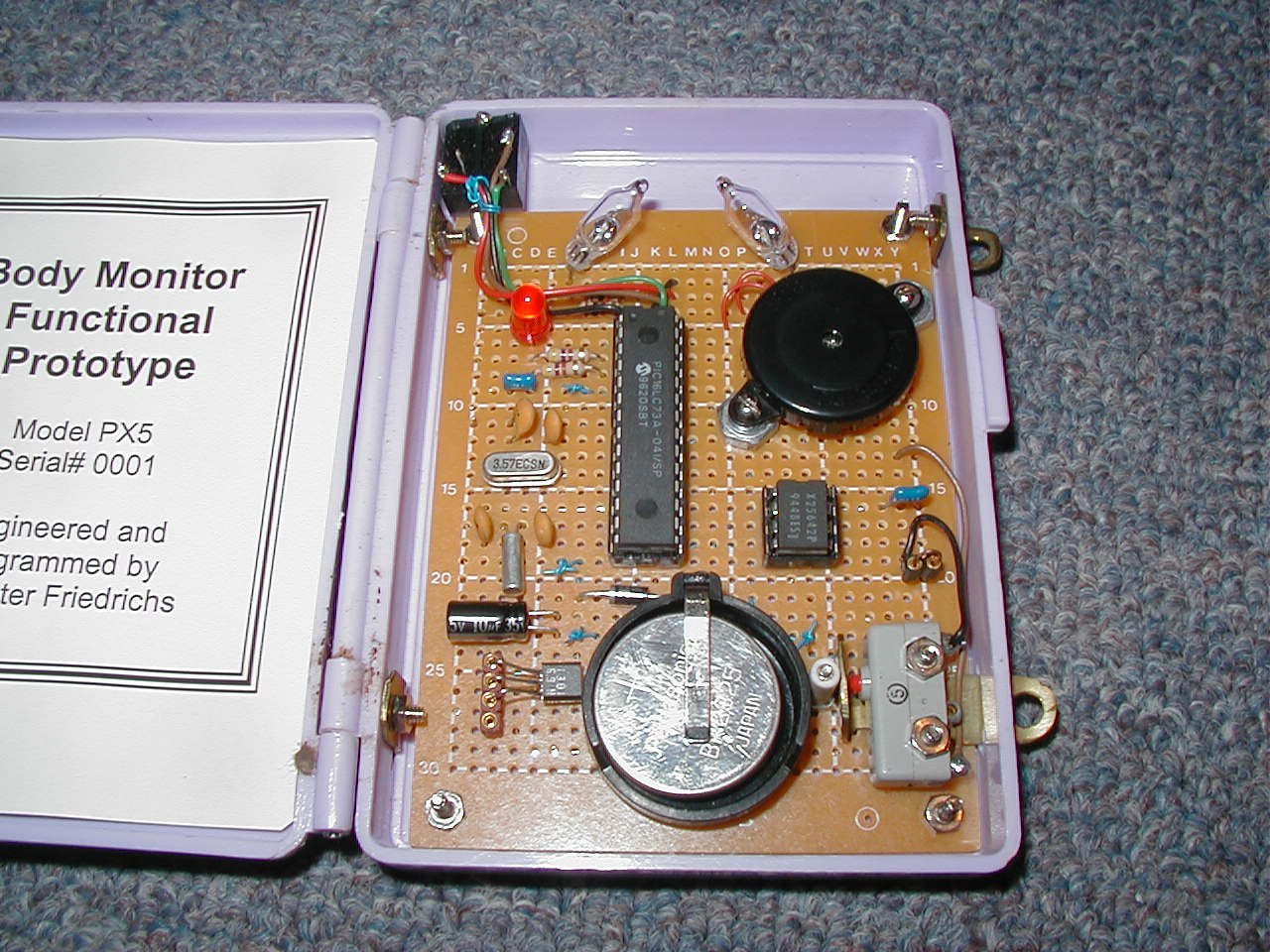H. P. Friedrichs (AC7ZL) Homepage
My Projects
The Body Monitor PX
Summary
While living in Detroit, I befriended a couple who had, among other ventures, owned and operated a medical service provider business. A specialty of that business included house calls, a now unheard-of service that is of vital importance to those who aren't mobile anymore.
Decubitus ulcers, or bedsores, represented a scourge that their doctors saw with alarming frequency. Bedsores are the degeneration of tissue caused by the prolonged application of pressure due to a person's own body weight. If a patient is unconscious, paralyzed, or very feeble, he or she does not have the ability to move about as you and I would, and bedsores are the result.
The severity of bedsores ranges from redness and irritation to full necrosis. What this means is that the flesh dies and decays, leaving festering holes that can reach all the way to the bone. Treatment involves the surgical removal of dead and dying flesh, and the application of absorbent materials and antibiotics. In any event, the associated pain and suffering is significant.
The only prevention for bedsores, at least as of the time this project was conceived, is regular movement and reorientation of the patient's body in order to distribute pressure loads on the body. The literature we studied at the time suggested that if a patient spent no more than 2 hours in a given position at a time, and was rotated with regularity, they might be spared the curse of bedsores.
Given the number of patients suffering this affliction, it was evident that they were not receiving proper care. The question was, how could the quality of their care be measured?
My friends suggested that an electronic "gizmo" attached to the body or clothing of the patient might be able to collect this data, but they left it to me to work out the details. Over the course of several months, I developed the prototype for an instrument that could do precisely what they had envisioned.
The Body Monitor PX was based on a PIC processor, programmed in Microchip assembler. Attached to the processor was a pair of mercury tilt-switches, which could detect body "roll" in 90-degree quadrants. The system featured an extra crystal used by the firmware to keep track of real-time, and the compressed results of attitude measurements were stored in a Xicor flash chip.
The processor was set up to spend the majority of its time in sleep mode, which meant that the quarter-sized lithium cells used to power the device would last for weeks. Rudimentary tamper detection was provided in the form of a microswitch which activated if the device was removed from the patient.
Data could be downloaded out of the instrument and into an IBM PC for analysis. The communication was done via RS-232 through 3.5 mm stereo audio cable. I wrote demonstration application code that could plot the data extracted from the Body Monitor, as well as analyze the data. The analysis portion of the application code looked for violations of the 2-hour rule, tamper events, and proper distribution of weight over all four quadrants.
Through-hole components and Vectorboard were used in the prototype instrument, although parts were carefully selected on the basis of the availability of surface-mount equivalents. The finished commercial version of the instrument would have used mercury-free tilt sensors, and would have probably been the size of a pack of matches.
Regrettably, my prototype was more robust than my partners' marriage. By the time they emerged from the ruins of their relationship and the Body Monitor concept was revisited, we found that somebody else had secured a patent on the idea.
None the less, I still consider the project a useful exercise in assembly language, SPI bit-banging, and real-time tracking through firmware.

(revised 08/04/06)
(revised 04/29/09)


